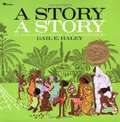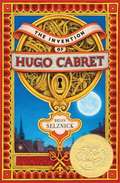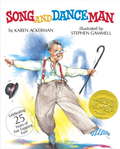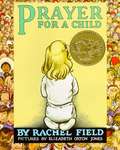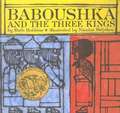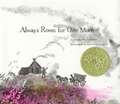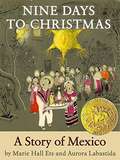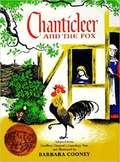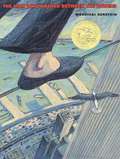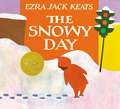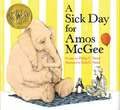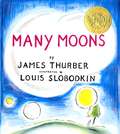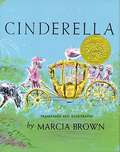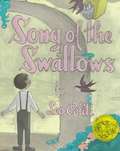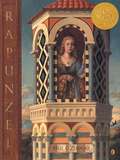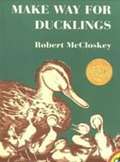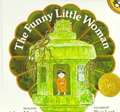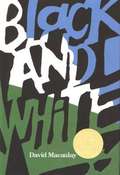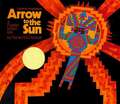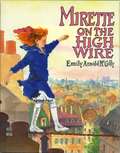Special Collections
Caldecott Award Winners
- Table View
- List View
A Story, A Story
by Gail E. HaleyMany African stories, whether or not they are about Kwaku Ananse the "spider man," are called, "Spider Stories." This book is about how that came to be. The African storyteller begins: "We do not really mean, we do not really mean that what we are about to say is true. A Story, a story; let it come, let it go." And it tells that long, long ago there were no stories on earth for children to hear. All stories belonged to Nyame, the Sky God.
Ananse, the Spider man, wanted to buy some of these stories, so he spun a web up to the sky and went up to bargain with the Sky God. The price the Sky God asked was Osebo, the leopard of-the- terrible-teeth, Mmboro the hornet who-stings-like-fire, and Mmoatia the fairy whom-men-never-see. How Ananse paid the price is told in a graceful and clever text, with forceful, lovely woodcut illustrations, which have been described.
Winner of the 1971 Caldecott Award.
[This text is listed as an example that meets Common Core Standards for K-1 in English language arts at http://www.corestandards.org.]
One Fine Day
by Nonny HogrogianFrom the book: A delightful telling makes this story of a greedy fox's adventure as catchy as a nursery rhyme. This book was the recipient of the 1972 Caldecott Medal.
The Invention of Hugo Cabret
by Brian SelznickOrphan, clock keeper, thief: Hugo lives in the walls of a busy Paris train station, where his survival depends on secrets and anonymity. Combining elements of picture book, graphic novel, and film, Caldecott Honor artist Selznick breaks open the novel form to create an entirely new reading experience in this intricate, tender, and spellbinding mystery.
Saint George and the Dragon
by Margaret HodgesWinner of the 1985 Caldecott Medal. Set "in the days when monsters and giants and fairy-folk lived in England," this retelling of a classic and well-loved tale recounts the battle between Saint George and the Dragon a creature so huge and fearsome that his tail "swept the land behind him for almost half a mile," and whose "deep jaws gaped wide, showing three rows of iron teeth ready to devour his prey." In graceful and evocative prose, Margaret Hodges retells the dramatic story from Edmund Spenser's Faerie Queene. Trina Schart Hyman portrays the monstrous dragon; the long, horrible battle; and the final victory celebration in exquisite detail, bringing her full artistic genius to bear in this work. Both storyteller and artist have re-created this timeless legend in a book for children of generations to come. MARGARET HODGES first thought of retelling the story of Saint George and the Dragon when a professor of hers mentioned that he had read Spenser's Faerie Queen, to his four year old granddaughter. After Mrs. Hodges saw a reading of the story enacted by puppets, she "became devoted to Saint George" and says that she finds him "everywhere in paintings, sculpture, stained glass, in poetry, and, above all, in legends of many lands. Saint George, it seems, is loved everywhere for his courage and virtue. In Spenser's version the character of Una is equally brave and adventurous." Margaret Hodges is Professor Emeritus in the School of Library and Information Science at the University of Pittsburgh. She has written over twenty books for children and has a special interest in folklore and legends passed down through the oral tradition. TRINA SCHART HYMAN describes herself as "an old-fashioned, traditional kind of illustrator," who welcomed the chance to try out all her romantic ideas on this retelling of Saint George and the Dragon. In the process, she "gained a lot of respect for all her old heroes and their warlike ways," and admits that she was very relieved when the Dragon was finally killed. In the borders of the book, she has painted flowers that are indigenous to the British Isles. Trina Schart Hyman lives in Lyme, New Hampshire, and has illustrated many classic fairy tales for children, including Snow White and The Sleeping Beauty.
Song and Dance Man
by Karen Ackerman and Stephen GammellWhen his grandchildren follow Grandpa up the attic stairs, a dazzling show, better than any on TV, is about to begin! Grandpa opens a dusty trunk, pulls out bowler hat and gold-tipped cane, and suddenly we are back in the good old days, the song and dance days. The lights are twinkling, and a vaudeville man is doing the first slippery steps of the old soft shoe. So sit right back and enjoy the show as Karen Ackerman and Stephen Gammell's warm, wondrous Grandpa brings new life to days gone by.
Ashanti to Zulu
by Margaret MusgroveIt would take volumes to describe the cultures of all the African tribes, but here are insights about 26 of them, from the Ashanti to the Zulu. Margaret Musgrove has described ceremonies, celebrations, and day-to-day customs. Some of them are shared by many peoples, others are unique, but all are fascinating. This book won the 1977 Caldecott Award.
Prayer for a Child
by Rachel FieldA prayer full of the intimate gentleness for familiar things, the love of friends and family, and the kindly protection of God. Though it was written for one little girl, the prayer is for all boys and girls, and it carries a universal appeal for all ages and races.
Winner of the Caldecott Medal
The Little Island
by Golden MacdonaldOnce there was a little island in the ocean. That little island changes as the seasons come and go. The storm and the day and night change it. So do the lobsters and seals and gulls that stop by. Then one day a kitten visits the little island and learns a secret that every child will enjoy.
Baboushka and the Three Kings
by Ruth RobbinsThe children of old Russia awaited with joy the coming of Baboushka at Christmastime as our children today await Santa Claus. Baboushka's story is retold here with beauty and warmth. When the three kings ask the old woman to join them in their search for the Child, she declines because her day's work is not finished. In vain, she tries to follow them the next day. Since that distant time, Baboushka has continued her endless search for the Child. The primitive beauty of old Russia is captured in rich four-color pictures by Nicolas Sidjakov, illustrator of the well-known THE FRIENDLY BEASTS. Included is the story in verse with music composed especially for this book.
Always Room for One More
by Sorche Nic LeodhasLachie MacLachlan, the generous hero of this enchanting picture book, is the delightful exception to the rule that the Scots are a thrifty lot. To his "wee house in the heather" where he lives with his wife and ten children, the good-natured Lachie invites every traveler who passes on a'stormy night, assuring all that "there's always room for one more.'" Tinkers, tailors, shepherds, even dogs -sing and dance the night away until, alas, the rafters groan and the walls of his hospitable little home bulge to the bursting point. But Lachie's kindness is repaid. Just how his grateful guests eventually say a wonderful "thank-you" provides a delightfully warm ending to this lilting narrative.
Nine Days To Christmas
by Marie Hall Ets and Aurora LabastidaPublished over 30 years ago, Nine Days to Christmas remains fresh and relevant. Ceci's first Christmas posada party and pinata have made her Mexican town come alive for generations of readers. "The youngest child will be completely transported by this lovely story".
Chanticleer and the Fox
by Geoffrey Chaucer and Barbara CooneyWinner of the 1959 Caldecott Medal this interpretation of the Nun's Tale from the Canteberry Tales, is a great lesson.
The Man Who Walked Between the Towers
by Mordicai Gerstein
In 1974, as the World Trade Center was being completed, a young French aerialist, Philippe Petit, threw a tightrope between the two towers and spent almost an hour walking, dancing, and performing tricks a quarter of a mile in the sky.
Petit's high wire walk has remained part of the history of New York City and of the World Trade Center. The Man Who Walked Between the Towers captures the poetry and magic of his feat with a poetry of its own: lyrical words and lovely ink and oil paintings that present the detail, the daring, and-in two dramatic foldout spreads-the vertiginous drama of Petit's feat.
Just as the massive towers of the World Trade Center remain in memory, so too does the image of a young man walking in the air between them- here given expression by a master picture book artist.
A Caldecott winner. The book is unpaged.
Mordicai Gerstein is the highly regarded author and illustrator of more than thirty books for children including, most recently, What Charlie Heard, a portrait of the composer Charles Ives.
He lives with his wife, Susan Harris, and their daughter, Risa, in Northampton, Massachusetts.
Winner of the 2004 Caldicot Medal for illustrations.
The Snowy Day
by Ezra Jack KeatsNo book has captured the magic and sense of possibility of the first snowfall better than The Snowy Day. Universal in its appeal, the story has become a favorite of millions, as it reveals a child's wonder at a new world, and the hope of capturing and keeping that wonder forever. Images and image descriptions available.
A Sick Day for Amos McGee
by Philip C. Stead and Erin E. SteadTHE BEST SICK DAY EVER and the animals in the zoo feature in this striking picture book debut. Friends come in all sorts of shapes and sizes. In Amos McGee's case, all sorts of species, too! Every day he spends a little bit of time with each of his friends at the zoo, running races with the tortoise, keeping the shy penguin company, and even reading bedtime stories to the owl. But when Amos is too sick to make it to the zoo, his animal friends decide it's time they returned the favor A Sick Day for Amos McGee is a 2011 Bank Street - Best Children's Book of the Year and the winner of the 2011 Caldecott Medal. Images and image descriptions available.
Cinderella or the Little Glass Slipper
by Charles PerraultThe fairy tale about a gorgeous and poor girl named Cinderella who is ill-treated by her stepmother and stepsisters. Will she find her prince?
Song of the Swallows
by Leo PolitiThe story of the friendship between Juan, a little boy in the California town of Capistrano and Julian, the old gardener and bell-ringer at the Mission of San Juan Capistrano.
The Hello, Goodbye Window
by Norton JusterFrom the book: The kitchen window at Nana and Poppy's house is, for one little girl, a magic gateway. Everything important happens near it, through it, or beyond it. Told in her voice, her story is both a voyage of discovery and a celebration of the commonplace wonders that define childhood. It is also a love song devoted to that special relationship between grandparents and grandchild. The illustrations in this book look like pictures colored by a child. Pictures are described. This book received the Newberry Award.
Rapunzel
by Paul O. ZelinskyTrapped in a tower with no door, Rapunzel is allowed to see no one but the sorceress who has imprisoned her-until the day a young prince hears her singing to the forest birds. . . . The timeless tale of Rapunzel is vividly and magnificently brought to life through Paul O. Zelinsky's powerful sense of narrative and his stunning oil paintings. "Simply put, this is a gorgeous book; it demonstrates respect for the traditions of painting and the fairy tale while at the same time adhering to a singular, wholly original, artistic vision. " (The Horn Book, starred review)
Make Way for Ducklings
by Robert MccloskeyThis classic tale of the famous Mallard ducks of Boston was awarded the Caldecott Medal in 1941. Make Way for Ducklings has been described as 'one of the merriest picture books ever' (The New York Times). Ideal for reading aloud, this book deserves a place of honor on every child's bookshelf. Images and image descriptions available.
The Funny Little Woman
by Arlene MoselThis is the story of a funny little woman who lives all by herself in her own little hut. She's a dumpling maker by trade, and one day a naughty dumpling escapes down a crack in her floor. As she reaches for it, the floor gives way and the woman finds herself on an ancient road surrounded by statues of gods. The statues warn the woman not to attract the attention of the local Oni (an evil demon) but the woman's giggles can't keep her hidden for long. Soon she's cooking for all the Oni in their homes with the help of a magic paddle. By the end, however, the woman wishes to return to her house and it is only when she is able to make the Oni laugh at her (rather than vice versa) that she is enabled to escape and prosper. Like all good folktales, this one contains elements that are familiar throughout the world. This book was the recipient of the 1973 Caldecott Medal.
Black and White
by David MacaulayFour stories are told simultaneously, with each double-page spread divided into quadrants. The stories do not necessarily take place at the same moment in time, but are they really one story?
Winner of the Caldecott Medal
Arrow to the Sun
by Gerald McdermottA young boy searches for his father, but before he can claim his heritage he must first prove his worthiness by passing through the four ceremonial chambers: the kiva of lions, the kiva of snakes, the kiva of bees, and the kiva of lightning. This book was the Caldecott Book Award Winner in 1975.
Mirette On the High Wire
by Emily MccullyWinner of the 1993 Caldecott Medal. One day, a mysterious stranger arrives at the boardinghouse of the widow Gâteaua sad-faced stranger, who keeps to himself. When the widow's daughter, Mirette, discovers him crossing the courtyard on air, she begs him to teach her how he does it. But Mirette doesn't know that the stranger was once the Great Bellini master wire-walker. Or that Bellini has been stopped by a terrible fear. And it is she who must teach him courage once again. Emily Arnold McCully's sweeping watercolor paintings carry the reader over the rooftops of nineteenth-century Paris, and into an elegant, beautiful world of acrobats, jugglers, mimes, actors, and one gallant, resourceful little girl.
